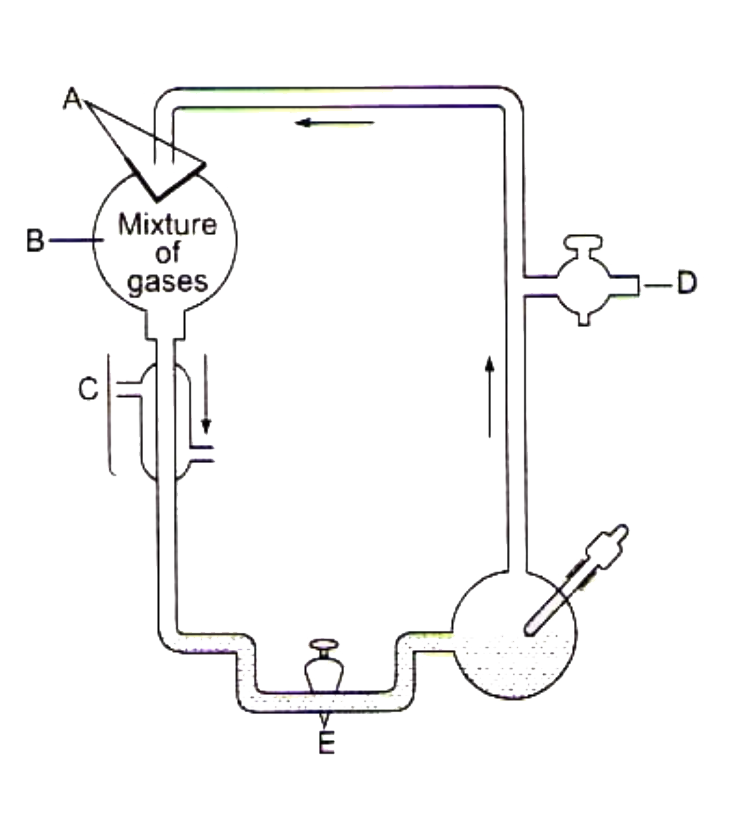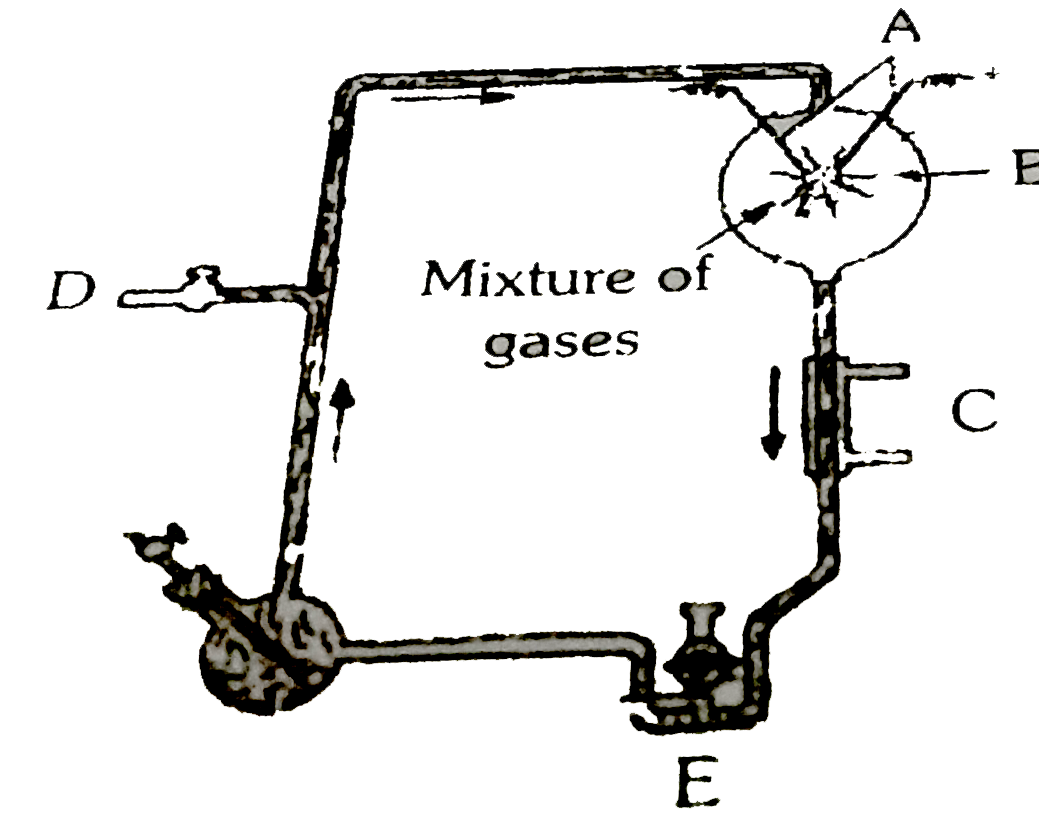Describe Miller's experiment.
Step-by-Step Solution to Describe Miller's Experiment
1. Background of the Experiment:
- In 1952, Stanley Miller conducted an experiment to simulate the conditions of primitive Earth, which existed around 4.5 to 5 billion years ago. The aim was to understand how organic compounds could form from inorganic substances.
2. Setup of the Experiment:
- Miller used a closed flask apparatus to create a controlled environment. He filled the flask with a mixture of inorganic gases that were believed to be present in the early atmosphere.
3. Inorganic Gases Used:
- The gases included:
- Methane (CH₄)
- Ammonia (NH₃)
- Hydrogen (H₂)
- Water vapor (H₂O)
4. Simulating Primitive Conditions:
- To mimic the conditions of early Earth, Miller introduced electrical sparks into the flask to represent lightning, which was common in the atmosphere at that time. Additionally, the temperature inside the flask was kept high to simulate volcanic activity.
5. Presence of Water:
- The flask was surrounded by water, representing the abundant presence of water on primitive Earth, which is crucial for the formation of life.
6. Results of the Experiment:
- After running the experiment for a week, Miller observed that several organic compounds had formed, including amino acids. Amino acids are the building blocks of proteins, which are essential for life.
7. Significance of the Findings:
- Miller's experiment demonstrated that organic compounds, which are necessary for life, could arise from inorganic substances under the right conditions. This provided insight into the origin of life on Earth.
8. Conclusion:
- The experiment suggested that life could have originated from non-living matter, supporting the idea that simple organic molecules could evolve into more complex structures, eventually leading to the first primitive cells, known as coacervates.
- In 1952, Stanley Miller conducted an experiment to simulate the conditions of primitive Earth, which existed around 4.5 to 5 billion years ago. The aim was to understand how organic compounds could form from inorganic substances.
- Miller used a closed flask apparatus to create a controlled environment. He filled the flask with a mixture of inorganic gases that were believed to be present in the early atmosphere.
- The gases included:
- Methane (CH₄)
- Ammonia (NH₃)
- Hydrogen (H₂)
- Water vapor (H₂O)
- To mimic the conditions of early Earth, Miller introduced electrical sparks into the flask to represent lightning, which was common in the atmosphere at that time. Additionally, the temperature inside the flask was kept high to simulate volcanic activity.
- The flask was surrounded by water, representing the abundant presence of water on primitive Earth, which is crucial for the formation of life.
- After running the experiment for a week, Miller observed that several organic compounds had formed, including amino acids. Amino acids are the building blocks of proteins, which are essential for life.
- Miller's experiment demonstrated that organic compounds, which are necessary for life, could arise from inorganic substances under the right conditions. This provided insight into the origin of life on Earth.
- The experiment suggested that life could have originated from non-living matter, supporting the idea that simple organic molecules could evolve into more complex structures, eventually leading to the first primitive cells, known as coacervates.
Topper's Solved these Questions
- EVOLUTIONBOOK - MODERN PUBLICATIONCHAPTER - EVOLUTIONEXERCISE - REVISION EXERCISES-(IV. SHORT ANSWER TYPE-II QUESTIONS)(Three mark each),(B. QUESTIONS FROM CBSE EXAMINATIONS :)
19 Videos
- EVOLUTIONBOOK - MODERN PUBLICATIONCHAPTER - EVOLUTIONEXERCISE - REVISION EXERCISES-(VI. LONG ANSWER TYPE QUESTIONS )(Five mark each)(A. QUESTIONS FROM STATE BOARD EXAMINATIONS : )
37 Videos
- EVOLUTIONBOOK - MODERN PUBLICATIONCHAPTER - EVOLUTIONEXERCISE - REVISION EXERCISES-(III. SHORT ANSWER TYPE-I QUESTIONS)(Two mark each),(B. QUESTIONS FROM CBSE EXAMINATIONS : )
11 Videos
- ECOSYSTEM BOOK - MODERN PUBLICATIONCHAPTER - ECOSYSTEM EXERCISE - Chapter Practice Test (Section - D) (Case - Based Short Answer Type Questions)
5 Videos
- HUMAN HEALTH AND DISEASESBOOK - MODERN PUBLICATIONCHAPTER - HUMAN HEALTH AND DISEASESEXERCISE - Chapter Practice Test
2 Videos
Similar Questions
The diagram represent Miller's experiment. Choose the correct combination of labelling.

View SolutionWhich of the following was most likely to have been absent in free form in the primordial atmosphere at the time of origin of life
Or
Miller performed experiment to prove molecular evolution of life. Which molecule was not present in Miller's experiment
View Solution
Knowledge Check
The diagram represents Miller's experiment. Choose the correct combination of labelling
 AA-electrodes, B−NH3+H2+H2O+CH4, C-cold water, D-vacuum, E-U trapBA-electrodes, B−NH4+H2+CO2+CH3, C-hot water, D-vacuum, E-U trapCA-electrodes, B−NH3+H2O, C-hot water, D-tap, E-U trapDA-electrodes, B−NH−(3)+H2+H2O+CH4, C-steam, D-vacuum, E-U trap
AA-electrodes, B−NH3+H2+H2O+CH4, C-cold water, D-vacuum, E-U trapBA-electrodes, B−NH4+H2+CO2+CH3, C-hot water, D-vacuum, E-U trapCA-electrodes, B−NH3+H2O, C-hot water, D-tap, E-U trapDA-electrodes, B−NH−(3)+H2+H2O+CH4, C-steam, D-vacuum, E-U trapWhich one of the following amino-acids was not found to be synthesized in Miller's experiment
AGlutamic acidBAlanineCGlycineDAspartic acidMiller performed experiment to prove abiogenetic molecular evolution of life. Which molecule was not present in Miller's experiment
AWaterBMethaneCOxygenDAmmonia
The surprise products in the Miller's experiment were
View SolutionIn simimlar experiments like Miller's experiment, which products were obtained?
View SolutionWhich of the following amino acids was not found to be synthesized in Miller's experiment?
View SolutionWhich of the following amino acids was not found to be synthesised in Miller's experiment ?
View SolutionWhich one of the following amino acids was not found to be synthesized in Miller's experiment?
View Solution
